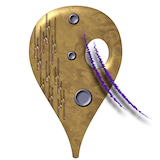Posts From 2021
(See recent posts or posts from: 2024 2023 2022 2021 2020 2019 2018 2017 2016 2015 2014 2013 2012 2011 2010 2009 2008)
- December 2021
-
(2021-12-18) That Kickstarter news
- November 2021
-
(2021-11-19) Slice of Sea
- October 2021
-
(2021-10-19) The apprehension of the Outer Wilds4 comments (latest 1 day later)
-
(2021-10-12) Outer Wilds: Echoes of the Eye2 comments (latest 2022-01-11)
- September 2021
-
(2021-09-27) Recent narrative games: summer 2021 edition2 comments (latest 15 hours later)
-
(2021-09-19) A plenitude of alchemical domains
- August 2021
-
(2021-08-29) Myst (2020)1 comment (22 hours later)
-
(2021-08-22) Seltani Jam, Sept 19
-
(2021-08-08) Design ruminations: Subverting the ending5 comments (latest 2022-06-03)
-
(2021-08-02) ZIL tidbits and Inform 6 dev news6 comments (latest 08-17)
- July 2021
-
(2021-07-25) Kickstarter boost: of pawns & kings, Blue June
-
(2021-07-19) Mysterium 2021 report
-
(2021-07-15) I see they called it Steam Deck
- June 2021
-
(2021-06-30) Daedalian Depths4 comments (latest 08-17)
-
(2021-06-25) Narrative structure for dogs4 comments (latest 22 hours later)
-
(2021-06-05) Hyperbolic text7 comments (latest 2022-01-18)
-
(2021-06-04) New Myst Online dev material
- May 2021
-
(2021-05-26) I am a person who will buy a SteamPal, sure, why not1 comment (06-22)
-
(2021-05-13) 2021 IGF nominees: exploding with delight1 comment (3 days later)
-
(2021-05-12) 2021 IGF nominees: tiny adventures2 comments (latest 1 day later)
-
(2021-05-11) 2021 IGF nominees: puzzle time
-
(2021-05-10) 2021 IGF nominees: story devices
-
(2021-05-09) 2021 IGF nominees: visual-novel-like-likes
-
(2021-05-08) 2021 IGF nominees: cosmic horror and not-horror
-
(2021-05-07) 2021 IGF nominees: stunning environments2 comments (latest 2 days later)
- April 2021
-
(2021-04-08) IF talks at Flights of Foundry
- February 2021
-
(2021-02-14) Unwinnability and Wishbringer23 comments (latest 04-21)
-
(2021-02-12) A couple of Myst fandom notes
- January 2021
-
(2021-01-08) Four (or five) recent Lovecraftians3 comments (latest 14 hours later)

